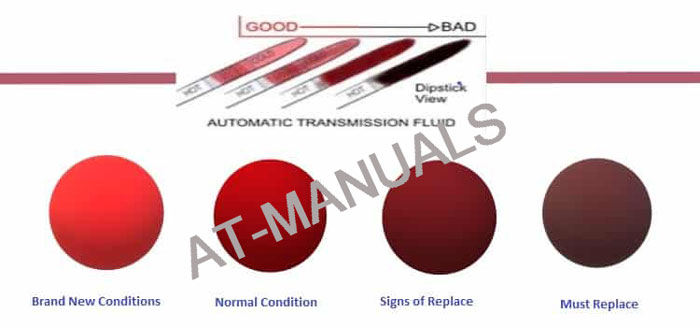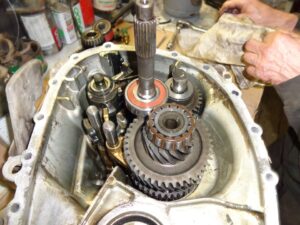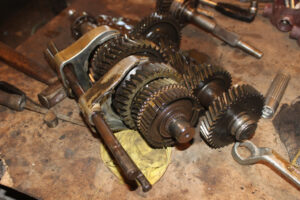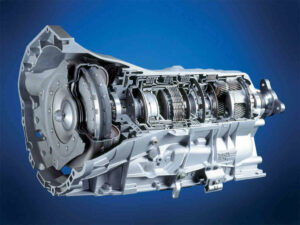Transmission Problems Guide - how to resolve?
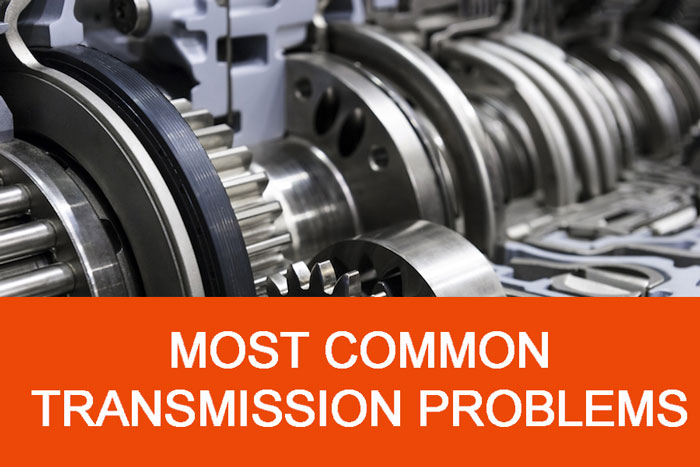
All car owners already are used to the fact that in transmission often there are problems, sometimes even without any preconditions. And when this happens, every car owner has a headache and is in huge stress, although at first glance it may seem that the problem is not worth it. In most cases, these problems occur due to:
- service performed improperly, or not performed at all;
- factors from outside, that is, those that arise for reasons that you can not change.
Transmission problems guide
It is known that despite the fact that parts of the car and consist of metal, it can still be damaged or broken. That is why every car owner should be prepared for the fact that sooner or later in his car there may be transmission failure. To avoid serious damage to the gearbox, which can have a very negative impact on other parts of the car, perform its diagnosis and maintenance. After all, as you know, it is easier to avoid unpleasant situations than to correct them later. Moreover, it always entails significant financial costs. Read this article which is in some way a vehicle fault instruction. Perhaps the information you find here will help you avoid or eliminate many of your car’s problems.
Transmission problems that occur most often:
- fluid level below normal and presence of leaks;
- burnt liquid;
- torque converter fault;
- failure solenoid;
- defects of clutch;
- the appearance of grinding or sounds of unknown origin;
- improper engine light;
- slipping of transmission;
- problems of stalling and shifting.
Fluid level below normal and the presence of leaks
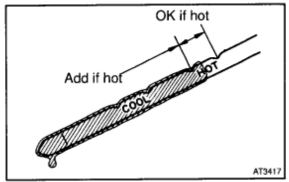
- rusted or loose bolts and seals;
- violation of the integrity of the liquid supply line or vacuum tube;
- a crack or breakdown in the gasket or the defective drive shaft.
This article will provide you with useful information about possible existing methods for analyzing and adjusting the fluid level in the transmission. For correct and smooth operation of the transmission, it is necessary to constantly monitor that the liquid level is normal, otherwise, there will be a sharp change in temperature. This will result in a hydraulic load. If you are faced with such a problem, do not waste time, in this case, you need to start looking for a possible cause of the leak and take the necessary measures to eliminate it as quickly as possible, otherwise you risk aggravating the problem. About how to do this, read on. Immediately after you have detected the leak, identified its cause and successfully carried out measures to eliminate it, think about what you have to normalize the liquid level. In order to make sure that the liquid level has decreased due to leakage, carefully inspect the area under the car. If you find wet spots, it means there’s still a leak.
Burnt fluid
In the event that the transmission fluid is overfilled with dirt particles or other foreign elements, the result will be its combustion. This situation will lead to insufficient cooling and overheating of the transmission. Also, such a negative result can be an increase in the temperature of the liquid or the use of its incorrect type. If there was a burning of the liquid, you will feel the pungent smell of burning, and you can visually distinguish the burned liquid from the new, which has a red colour and a sweet glow.
In the case of the dark colour of the liquid and its burnt smell, you should understand that it is necessary to replace the liquid. If you leave everything unchanged and leave the burned liquid, then, as a result, it will lead to serious transmission problems or the cessation of its functioning at all. To avoid this, it is necessary to replace the burned liquid with a new one, change the filter or the transfer flow.
Torque converter fault
It is known that cars with a manual transmission are equipped with a clutch that performs the function of connecting the engine to the transmission. But in automatic transmissions, this function is performed by the Torque Converter. It can be described as a hydraulic clutch. This part of the car starts the rotation of the engine. This has no connection with the transmission and occurs as a result of the pressurization of the transmission fluid. But the elements of torque converters are very often the cause of transmission faults, such as deformation of needle bearings. Needle bearings act as a starter separator, impeller, turbine and transducer housing. It is worth noting that it is this to do torque Converter very often fails, the frequency of such cases is very high. If while driving you hear suspicious sounds of your transmission, then the likely reason for this can be deformed bearings. In case of damage, metal parts of the transducer are contacted, resulting in debris and debris entering the transmission fluid and its flow circulating through the transmission.
Breakdowns can also consist of:
- the destruction of the seal;
- outdated torque converter clutch;
- problems with torque converter clutch solenoid.
In this case, without repair cannot do, even this case will upset you, because the problems of this nature are very complex and serious, requiring mandatory correction.
Failure solenoid
The solenoid in your car is responsible for the movement of fluid around the perimeter of the transmission. It is an electrohydraulic valve and very often fails due to a decrease in the liquid level below the standard. Its dysfunction can cause problems with the electronics of the car. The failure of fluid intake is associated with these problems. All the above have a negative impact on the operation of the transmission and can even lead to its failure.

Consider a situation where you are driving with more effort than usual when shifting gear. The first thing you do is check the fluid level and the presence of cracks and leaks. But if it’s not a problem, then what is it? The recommendation will be to check the solenoid, it is likely the problem in it. You can install this by checking the engine check light — if it is not lit, then the problem is in the car electronics. This is most likely due to damage to the wires that connect the pickle and the on-Board computer of the car. And here with the test, there is no problem at all, simply connect the scanner to it and soon you will learn about all the failures of your car.
Defects of clutch
All owners of cars with manual transmission are familiar with such an unpleasant phenomenon as traction coupling. Its essence is that when you press the clutch pedal does not disconnect the flywheel clutch disc. This situation is accompanied by a number of unpleasant consequences, as the clutch of your car with the road surface is broken or completely stops working. If during the transfer switch you merge extraneous uncharacteristic sounds and noises, then check the clutch, it is possible it is deformed and emits these sounds. If you are the owner of a car in the manual transmission, the elimination of this problem will cost you less than if your car was equipped with an automatic transmission. What reduces the ability of the clutch disc to disconnect from the flywheel? The reasons may be different, but most likely it is due to the weak clutch pedal.
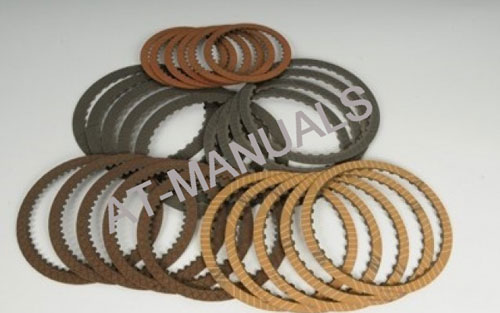
Speaking of the clutch, it would be unfair to mention it only in the context of the manual transmission, because automatic transmissions are also equipped with such detail. Moreover, they are located not only around its perimeter but also in the Torque Converter Assembly. The main problem is that there are times when the clutch can get damaged and burn. And this in turn causes such serious consequences as slipping and disruption of the transmission fluid pressure. All this has a very negative impact on the work of the transfer, which is expressed in the following phenomen a:
- shaking;
- overheating;
- difficulties when switching gears.
It would seem that the same problem for the automatic and manual transmission, but for automation, this problem has more complex ways of elimination.
The appearance of grinding or strange sounds
It so happens that when driving a car suddenly you notice the wall uncharacteristic jerks, shakes, extraneous noises and sounds. Do not panic, the problem is likely to lie in the transfer. It is worth checking it in the first place. In this way, you will be able to understand the causes of the problem.
Call key for manual transaxle:
- deformation of the coupling;
- the failure of the synchronizers of the transmission;
- a damaged or worn synchronizers.
In order not to be stressed during the unusual behavior of your car, remember the following — the appearance of strange atypical sounds and noises produced during the movement of your car is almost always an indicator of a problem in the gearbox, while you will also feel difficulty when switching speed modes, or shaking the car when it comes to automatic transmission. So, the location of a possible problem you already know so proceed to check it to fix the problem as soon as possible and prevent the emergence of even more problems. How to do this? Check your car’s computer for error codes. You can do it yourself, if you have a scanner, or contact the car service. Some of it, by the way, provide this service for free.
Improper engine light
Sometimes it happens that the engine check light suddenly goes out and it can scare the car owner, especially if he is new to the issues of car problems. What could be the cause of such a situation and what to do if it happened to your car? What financial losses did you incur? You start to get nervous, do not know where to start and what to do, although in fact there is nothing that could make you worry. You can not immediately determine the cause that caused the light outage, but as one of the possible options, you can consider the problem with the transmission. If you encounter a problem with dim light, try to find out the cause as quickly as possible. Your car is equipped with sensors that transmit information about the signs of unusual phenomena to the computer. That’s why this problem is not so dangerous, because its cause can be easily diagnosed by connecting the car’s computer to the scanner. Once the cause of the failure is established, you must decide whether you have sufficient knowledge to eliminate it, or you will have to go to the car workshop, where you will have qualified assistance. As a rule, problems of this nature are not too serious, and it is likely that you will cope with it yourself. The problems of this type of worn sensors. An elementary replacement will help you to troubleshoot and return your peace of mind.
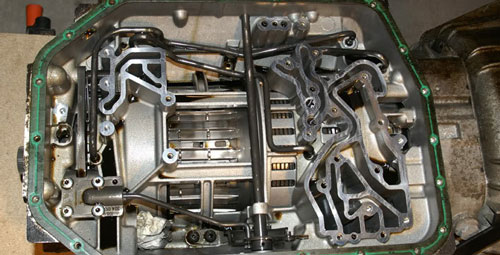
Slipping of transmission
What could be more dangerous when driving than slipping? This fault must be corrected immediately. First of all, check the liquid level and serviceability of the solenoid, as this is often the cause of slipping. If there were no problems, the following are to be checked gears, couplings and belts. A situation where the gearshift is not easy is a signal of a malfunction in the gearbox.
Lowering the liquid level below the norm is due to the presence of cracks or holes and as a result of leakage. In this case, the damage that caused the leak must be detected and repaired. Liquid saturated with foreign particles can cause the car to slip. Therefore, if the liquid level does not cause problems, check its quality.
A faulty or damaged solenoid is the next common cause of slipping. It is also subject to inspection and, if necessary, repair or replacement.
The cause of sliding cars with a manual gearbox is outdated and out-of-order gears. If you check your car you have come to this conclusion, it is mandatory to replace it with new ones and you will no experience slipping when driving.
The binding elements between the gears of the gearbox are the transmission bands. Their dysfunction may occur if they are worn out or damaged. If you are faced with such a problem, do not despair, their repair or replacement will not take much time and money.
Thanks to the special coating material, the clutch plates can interact with the gears. However, the negative point is that this material may burn out prematurely. Simply replace the defective clutch plates with new ones to avoid slipping problem.
Stalling or shifting problems
If you have problems in the transmission of your car such as stalling and shifting, do not delay and fix the problems that led to its appearance. In order to identify this problem in time, pay attention to the transfer rate, if it is slower than usual, then you have problems with stalling and shifting. They are also characterized by the situation when you press the gas pedal, but the car moves much slower than it should.
The problem of shifting is that the execution time of this procedure of gearshift increases. What is happening at standard reference conditions. The problem is in the transmission it may be noted in situations when the gear shift is not happening smooth engagement. Clearly identify why this happened is not possible without a diagnosis, but as a variant, it is possible to assume problems with the fluid, namely its level below the permissible burn-out or the wrong type. Among the possible reasons, it is also worth noting the failed sensor or solenoid defect that can be detected when checking the on-Board computer of the car.
The problem of stalling is the delay in the movement of the car. If you press the gas pedal your car is moving very slowly or at all standing still, then you have a problem of stalling. For what reasons it happened reliably can be found only after diagnosis, but before that, you can check the liquid level and the serviceability of the solenoid, which are the most common causes of this problem.
If you do not have enough competence to independently eliminate any of the above breakdowns or malfunctions, the best solution in this situation will be to appeal to experienced qualified automotive services.

